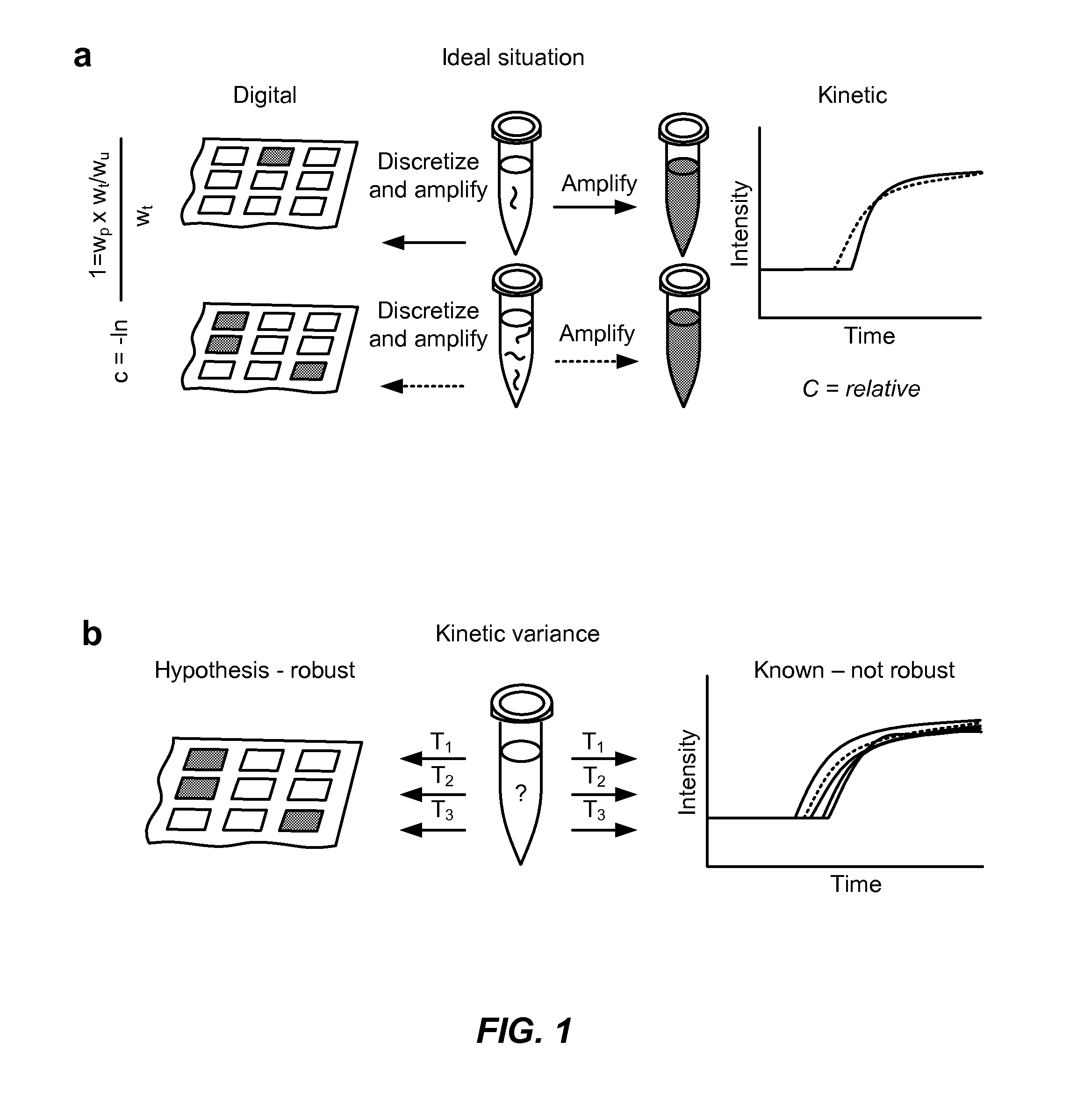Methods and systems for microfluidics imaging and analysis
a microfluidics and imaging technology, applied in the field of methods and systems for microfluidic imaging and analysis, can solve the problems of difficult to use consumer electronics for diagnostics or detection, complex and expensive laboratory equipment must be used in highly controlled environments, and the use of complex and expensive laboratory equipment must be difficult,
- Summary
- Abstract
- Description
- Claims
- Application Information
AI Technical Summary
Benefits of technology
Problems solved by technology
Method used
Image
Examples
example 1
Formation of a SlipChip
[0255]The procedure of fabricating desired glass SlipChips using soda lime glass was based on previous work. The two-step exposing-etching protocol was adapted to create wells of two different depths (5 μm for thermal expansion wells, 55 μm for all the other wells). After etching, the glass plates were thoroughly cleaned with piranha acid and DI water, and dried with nitrogen gas. The glass plates were then oxidized in a plasma cleaner for 10 minutes and immediately transferred into a desiccator for 1 hour of silanization. They were rinsed thoroughly with chloroform, acetone, and ethanol, and dried with nitrogen gas before use.
[0256]Plastic polycarbonate SlipChip devices were directly oxidized in a plasma cleaner for 15 minutes after they were received from microfluidic ChipShop GmbH, and then transferred into a desiccator for 90 minutes of silanization. They were soaked in tetradecane for 15 minutes at 65° C. and then rinsed thoroughly with ethanol, then drie...
example 2
Single-Molecule Amplification in a SlipChip
[0258]A digital reverse-transcription loop-mediated isothermal amplification (dRT-LAMP) reaction was used for quantifying HIV-1 viral load. LAMP produces a bright fluorescence signal through replacement of manganese with magnesium in calcein.
[0259]Digital LAMP experiments have been described previously. Primers targeting the p24 gene were used. Quantifying viral load is necessary to monitor the effectiveness of antiretroviral therapy (ART). HIV virus quickly mutates under pressure of drug therapy due to its error-prone reverse transcriptase, which converts viral RNA to cDNA. These multiple mutations allow for the sudden appearance of drug-resistant strains that could be controlled by switching to another ART.
[0260]The steps of a digital LAMP experiment include loading samples onto a SlipChip device consisted of two glass plates with etched wells and channels lubricated with a layer of hydrocarbon oil enabled loading, compartmentalize, incub...
example 3
Imaging of SlipChip with Cell-Phone Camera
[0264]After incubation, the device from Example 2 was placed in a shoebox with a small window to mimic a dark room and imaged with a Nokia 808 cell phone.
[0265]A Nokia Pureview 808 cell phone was used to image and count microwells that contained the amplification product. This cell phone features a CMOS sensor with a Xenon flash which generates over 100,000 lux with a pulse with (PW) of 100-450 μs. The Nokia 808 PureView's large 1 / 1.4″ CMOS sensor has a 41 MP resolution, outputting a maximum of 38 MP (at 4:3 aspect ratio); pixel size is 1.4 μm. The camera has a Carl Zeiss F2.4 8.02 mm lens. Images captured in the PureView modes are created by oversampling from the sensor's full resolution. Pixel oversampling bins many pixels to create a much larger effective pixel, thus increasing the total sensitivity of the pixel.
[0266]The camera has focus distance of 15 cm in close-up mode, so a cell phone objective lens was used to bring the camera in cl...
PUM
| Property | Measurement | Unit |
|---|---|---|
| temperature | aaaaa | aaaaa |
| wavelengths | aaaaa | aaaaa |
| temperature | aaaaa | aaaaa |
Abstract
Description
Claims
Application Information
 Login to View More
Login to View More - R&D
- Intellectual Property
- Life Sciences
- Materials
- Tech Scout
- Unparalleled Data Quality
- Higher Quality Content
- 60% Fewer Hallucinations
Browse by: Latest US Patents, China's latest patents, Technical Efficacy Thesaurus, Application Domain, Technology Topic, Popular Technical Reports.
© 2025 PatSnap. All rights reserved.Legal|Privacy policy|Modern Slavery Act Transparency Statement|Sitemap|About US| Contact US: help@patsnap.com



